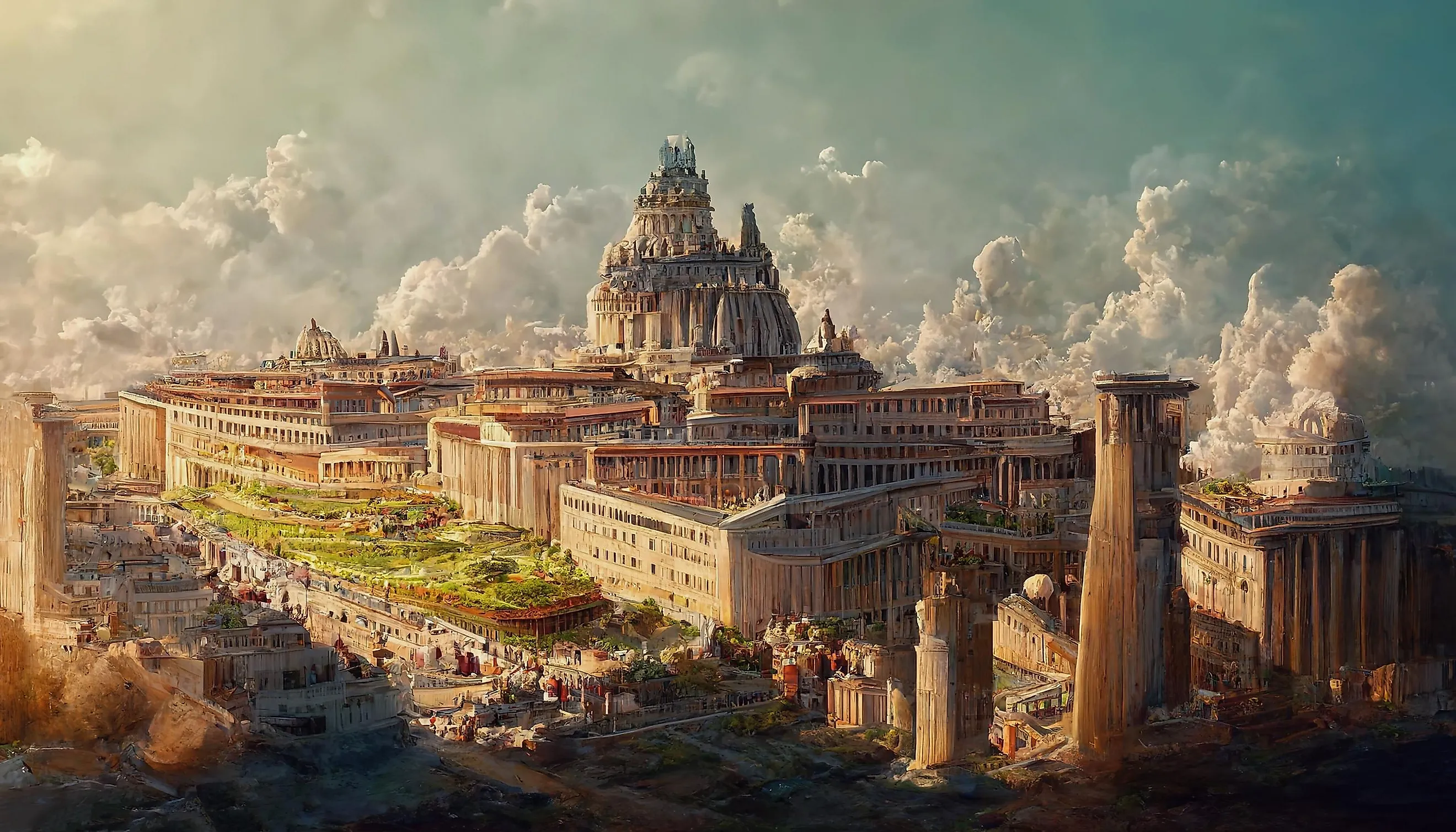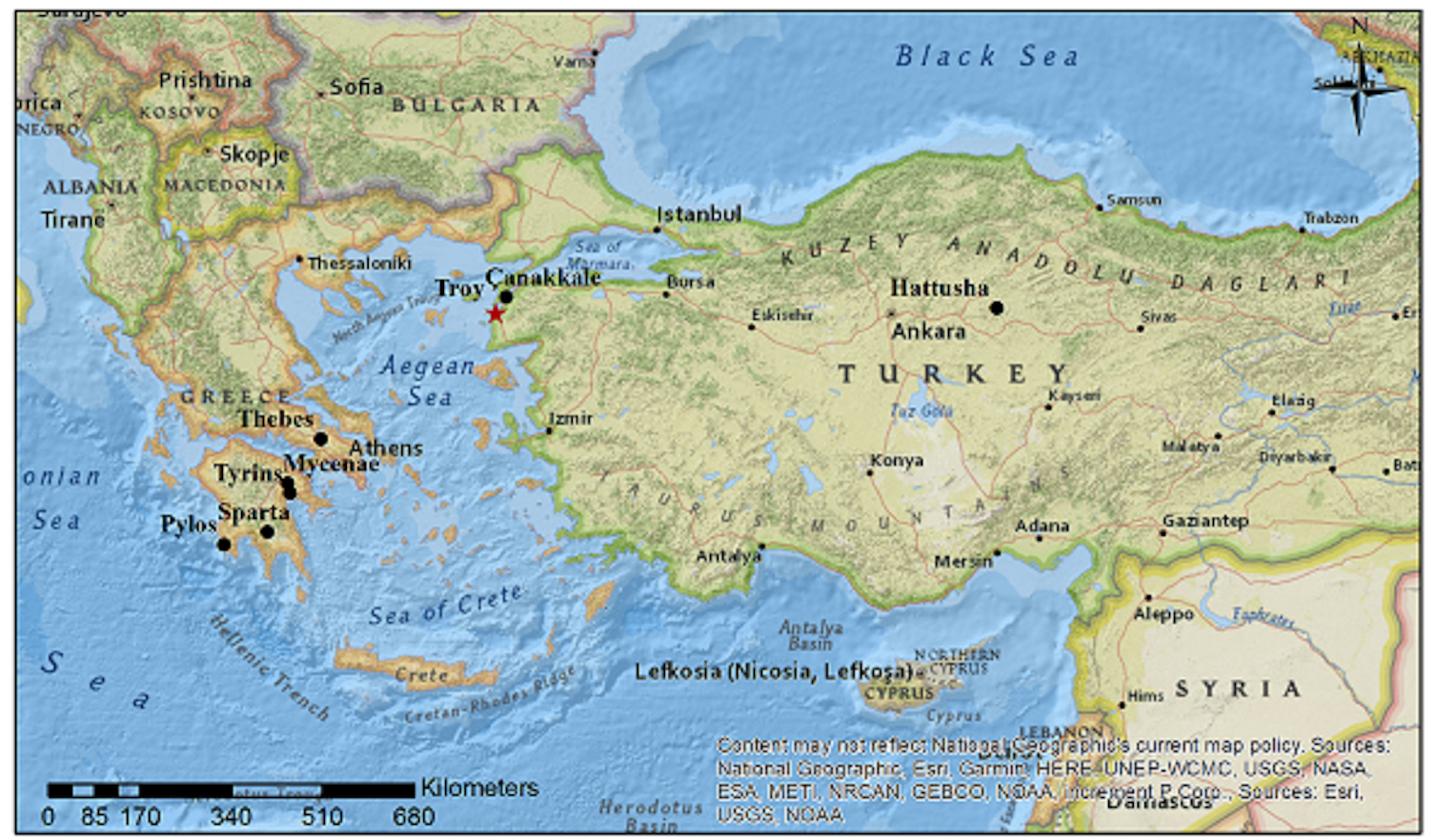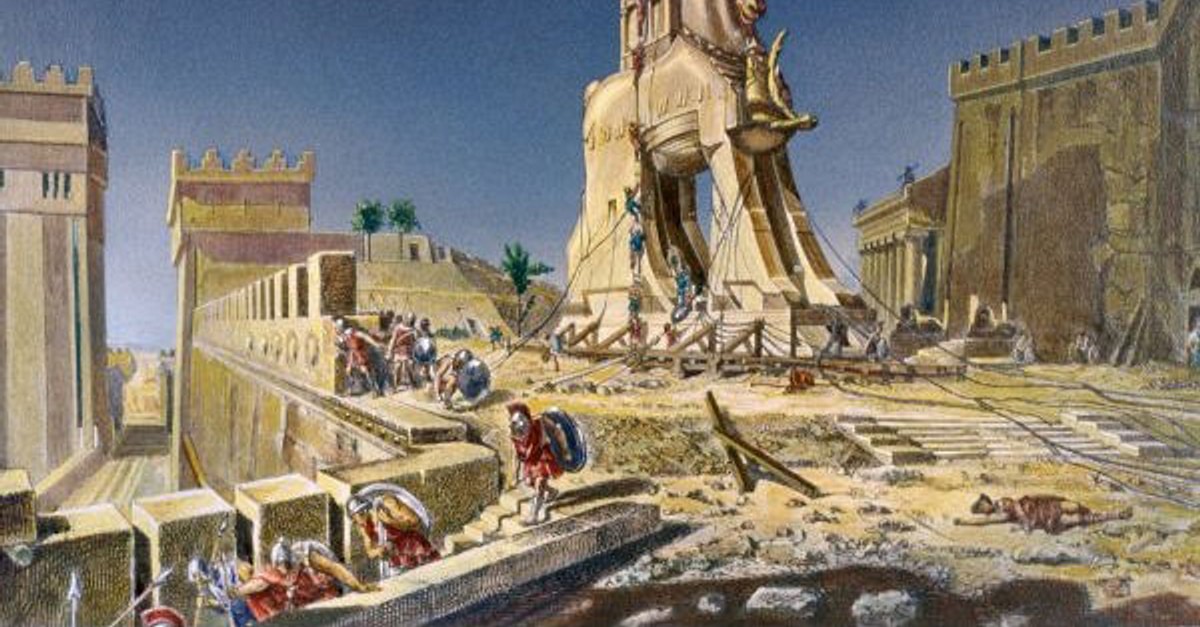Have you ever stopped to think about how some names just seem to echo through time, popping up in the most unexpected places? It's kind of fascinating, really, how a single word can carry so much history, so many stories, and yet still feel so current. When you hear a name like "Troy," it might, you know, bring to mind different things for different people, depending on what stories or experiences have touched their lives. For some, it could be a character from a popular movie; for others, it might spark thoughts of ancient tales and legendary places. It's quite a curious thing, how a name can have such varied connections.
This enduring presence of certain names, like "Troy," means they often appear in places we might not immediately connect to their deepest roots. It's almost as if the name itself has a life of its own, traveling through centuries and cultures, sometimes, you know, landing in completely new contexts. We see this often with names that carry a lot of weight from historical or mythical origins. They get picked up, reused, and given fresh meanings, yet a whisper of their old self often remains, like a subtle hint of where they truly began. It’s pretty neat, how that works.
So, what exactly is it about the name "Troy" that gives it such lasting power, making it a point of interest even today, perhaps even prompting questions about its appearances in modern culture? Well, the truth is, the story of Troy is a rather old one, a tale stretching back to a time long past, filled with epic poems and whispers of grand cities. This story, you see, has shaped so much of what we understand about ancient times, and it continues to capture imaginations, influencing everything from literature to, well, even the names we choose for places and characters. It’s a pretty big deal, this ancient city, and its story is still very much with us.
- August 30 Zodiac
- Sophie Mcshera
- Mallory Pugh
- Homicide Life On The Street
- College Student Missing In Punta Cana
Table of Contents
- What's in a Name - The Many Faces of Troy
- How Did Troy Get Its Different Names?
- Troy's Enduring Place in Storytelling
- Was Troy Just a Myth?
- The City's Location and Global Reach
- Where Does Troy Fit in the Ancient World?
- Bringing Troy to the Big Screen
- What About Troy in Modern Times?
What's in a Name - The Many Faces of Troy
When we talk about "Troy," it's kind of like peeling back the layers of an onion, because this one name actually represents a whole bunch of different identities across various historical periods and languages. You see, this legendary place, so often talked about in old stories, wasn't just known by a single word. It had, you know, several ways it was referred to, depending on who was doing the talking and when they were living. It’s pretty interesting how a single location can gather so many labels over a long stretch of time, isn't it?
For instance, if you were living in the time of the Hittites, a powerful group from ancient Anatolia, you might have called this important spot by names like Truwiša or Taruiša. These words, in their language, were what they used to point to this particular settlement. Then, when the ancient Greeks came along, they had their own way of saying it, which was Troíā. It's a bit like how we have different nicknames for our friends; different cultures, you know, had their own special names for this one very important city. And, well, that's just how language and history tend to work, isn't it?
And then, as time moved forward and the Roman civilization grew, they had their own version, calling it Troia. But that’s not all, because this place also had another widely recognized name: Ilion. This second name, too, had its own ancient Greek form, Ī́lion, and the Hittites also had a way of saying it, Wiluša. So, you see, it wasn't just "Troy" as a single, unchanging label; it was a place with a rich collection of names, each one reflecting a different group of people who knew it, talked about it, and, in some respects, shaped its story. It’s quite a lot to take in, all those different ways to say the same thing.
This variety in names really speaks to the city's long history and its interactions with various cultures. A place doesn't just get, you know, multiple names for no reason. It happens because different groups of people, with their own languages and traditions, encountered it, lived near it, or perhaps even fought over it. Each name, in a way, is a little snapshot of a specific moment in time, a particular group's connection to this ancient location. It really shows how interconnected the ancient world actually was, doesn't it?
The fact that these names, like Troíā or Wiluša, have been preserved through historical records and archaeological finds is pretty amazing. It means that scholars today can piece together a more complete picture of what this city meant to different societies, and how its identity shifted over many centuries. It’s a bit like finding old letters from different relatives all talking about the same family home; each one adds a new perspective to the overall story. So, you know, the names themselves tell a story, too.
How Did Troy Get Its Different Names?
You might wonder how a single ancient settlement ended up with so many different ways of being called. It's actually a common thing for significant places in the past, especially those that were, you know, important centers for trade or power. When different groups of people, speaking different languages, interact with the same location, they naturally give it a name that fits their own tongue. So, too, Troy, or whatever it was called at the time, would have been known differently by the Hittites, who were there first, and then later by the Greeks and the Romans. It's a pretty straightforward process, really.
Think about it this way: if you travel to a country where they speak a different language, they'll have their own word for your hometown, right? It’s kind of the same principle, just stretched over thousands of years and across a really big area. The Hittite names, Truwiša and Wiluša, are what we understand to be the earliest recorded names for the city, showing its importance to them. Then, the Greek names, Troíā and Ī́lion, came about as their influence grew and their stories became, you know, so widely known. It's a natural progression, really, as cultures interact and blend.
And then, you know, the Latin name, Troia, appeared as the Roman Empire expanded and absorbed much of the Greek cultural heritage. It’s like a layered cake of history, with each layer adding a new name, a new way of seeing the same place. Each of these names, in a way, confirms that this was a place of real importance, a site that captured the attention of many different peoples across various historical periods. It’s pretty cool how language can show us those old connections, isn't it?
The fact that the city was known as both Troy and Ilion, even within the same language, also speaks to its complex identity. Sometimes, places have alternative names for different reasons, perhaps a more formal name and a more common one, or names associated with different aspects of the city. So, you know, this duality of names just adds another layer to the city's historical personality, making it even more intriguing to think about. It’s almost like it had a couple of different personas, if you think about it.
Troy's Enduring Place in Storytelling
Beyond its many names, Troy holds a truly special spot in the long story of human imagination, mainly because of its deep connection to some of the oldest and most famous poems ever written. We're talking, you know, about Homer's epic poems, the Iliad and the Odyssey. These stories, passed down through generations, have made Troy a household name for centuries, even when people weren't sure if it was a real place or just a creation of a poet's mind. It's pretty amazing how words can do that, isn't it?
The Iliad, especially, tells a very long and detailed account of a great conflict, a kind of legendary assault on Troy. This poem describes, you know, heroes and gods, battles and strategies, all centered around this one city. It paints such a vivid picture that for countless generations, people have been captivated by the drama and the human struggles within its verses. It's a story that, you know, really gets into your head and stays there, doesn't it?
Then there's the Odyssey, which, while not directly about the conflict itself, still talks about the aftermath and the long journey home for one of the heroes who fought at Troy. So, you see, the city is mentioned again, reinforcing its place as a pivotal location in these foundational tales of Western literature. These poems, in a way, gave Troy its lasting fame, turning it from just a place into, you know, a symbol of courage, loss, and destiny. They really made it something special.
For centuries, these epic poems were more than just stories; they were, you know, a sort of history book for the ancient Greeks, shaping their understanding of their past and their values. The events at Troy, as described by Homer, became a cornerstone of their culture, influencing art, drama, and even their way of thinking about heroes and the human condition. It’s pretty clear that Homer's work, in a way, made Troy immortal, giving it a life that went far beyond its physical walls. That's a pretty big achievement for some old poems, if you ask me.
Even today, these stories continue to be read, studied, and adapted into new forms, showing just how powerful and timeless they are. The idea of Troy, the courage of its defenders, the cunning of its attackers – these themes still resonate with us, because, you know, they speak to universal human experiences. It’s really quite something how a story from so long ago can still feel so relevant, isn't it? It just goes to show how much we appreciate a good tale.
Was Troy Just a Myth?
For a very long time, like, centuries upon centuries, the city of Troy was, you know, mostly considered to be nothing more than a myth, a grand setting for Homer’s wonderful poems. People thought it was just a product of a poet's imagination, a fictional place where epic battles and heroic deeds unfolded. It was, basically, a story, a really popular one, but still just a story. It’s quite hard to believe now, but that was the general feeling for so long.
The idea that a place described with such detail in the Iliad and the Odyssey could be, you know, an actual physical location seemed too good to be true for many. Scholars and thinkers often treated these poems as works of fiction, meant to entertain and teach moral lessons, rather than as historical accounts. So, you know, the city itself was lumped in with the fantastical elements of the myths, seen as something that probably never truly existed outside of the verses. It’s a pretty common way to look at old stories, isn't it?
However, that perspective began to shift, as a matter of fact, when archaeological work started to uncover evidence that suggested otherwise. People began to look for the city, following clues from the ancient texts and geographical descriptions. This search eventually led to discoveries in northwestern Anatolia, a region that, you know, seemed to match the ancient descriptions of Troy's location. It was a really exciting time for history buffs and curious minds alike, you know, when those findings started coming to light.
These discoveries, the layers of ancient settlements found at the site, began to give weight to the idea that Homer’s legendary city might have been, in fact, a real place. The archaeological digs revealed evidence of a significant Bronze Age city, one that had experienced destruction and rebuilding over many centuries, which, you know, somewhat aligned with the tales of conflict. It’s pretty incredible how digging in the dirt can change our entire view of history, isn't it?
So, while the stories of the Trojan War still remain, you know, popular tales in the mythology of ancient Greece, the city itself has moved from being just a mythical setting to a confirmed archaeological site. It’s a place that scholars continue to study, asking questions about its size, its true history, and how much of the epic poems might be, you know, rooted in actual events. It’s a fascinating blend of legend and tangible history, if you ask me, and it keeps people guessing.
The City's Location and Global Reach
Troy's spot on the map, in northwestern Anatolia, was, you know, more than just a random piece of land; it was a really important location that gave the city a lot of influence in the ancient world. This particular area, you see, was strategically placed, sitting right on what were, basically, the main pathways for trade between Europe and Asia. So, it was a pretty big deal for anyone wanting to move goods or people across these vast continents. It’s almost like it was a natural crossroads, you know?
Because of where it was, Troy became, in some respects, a kind of hub


